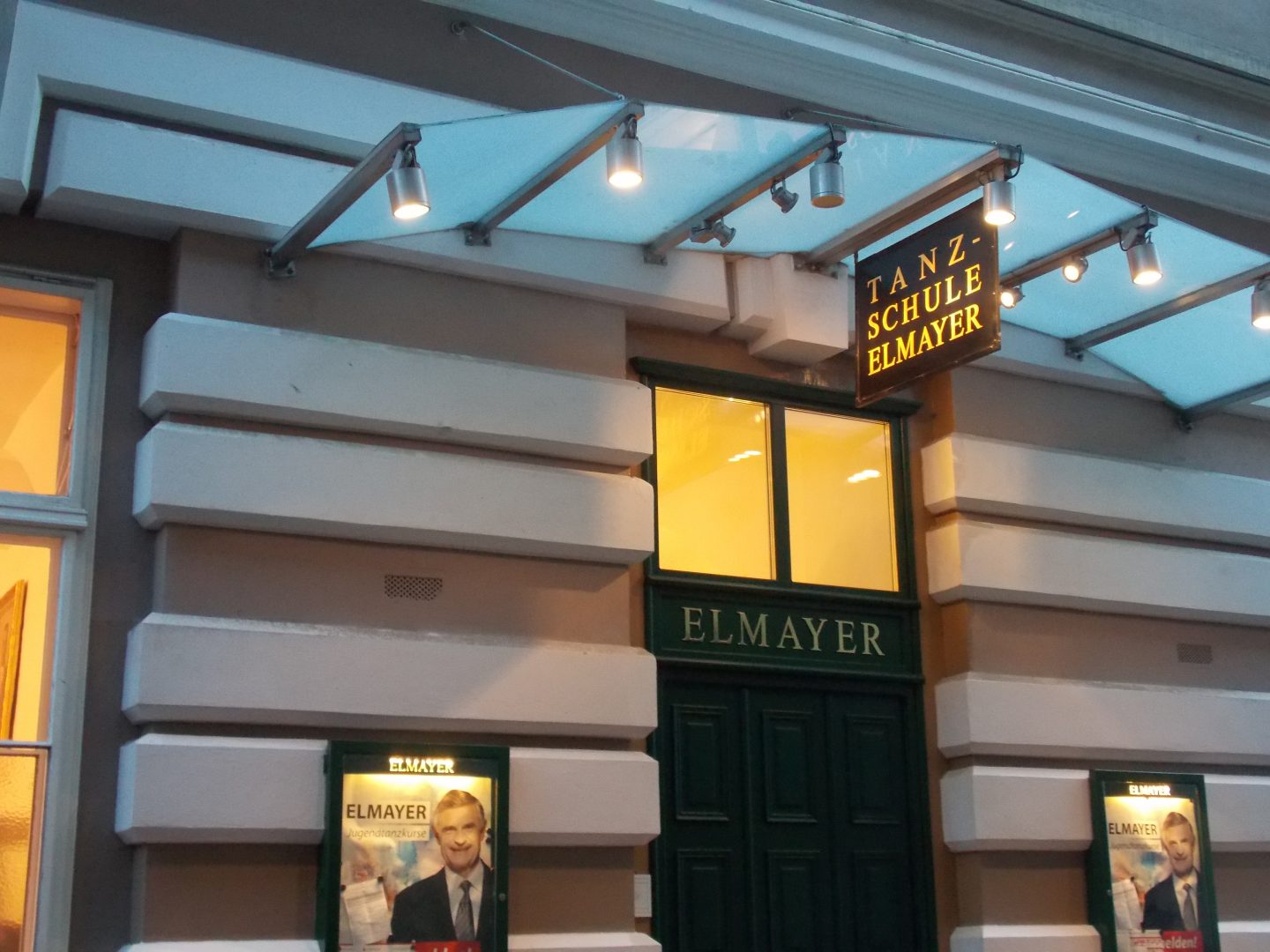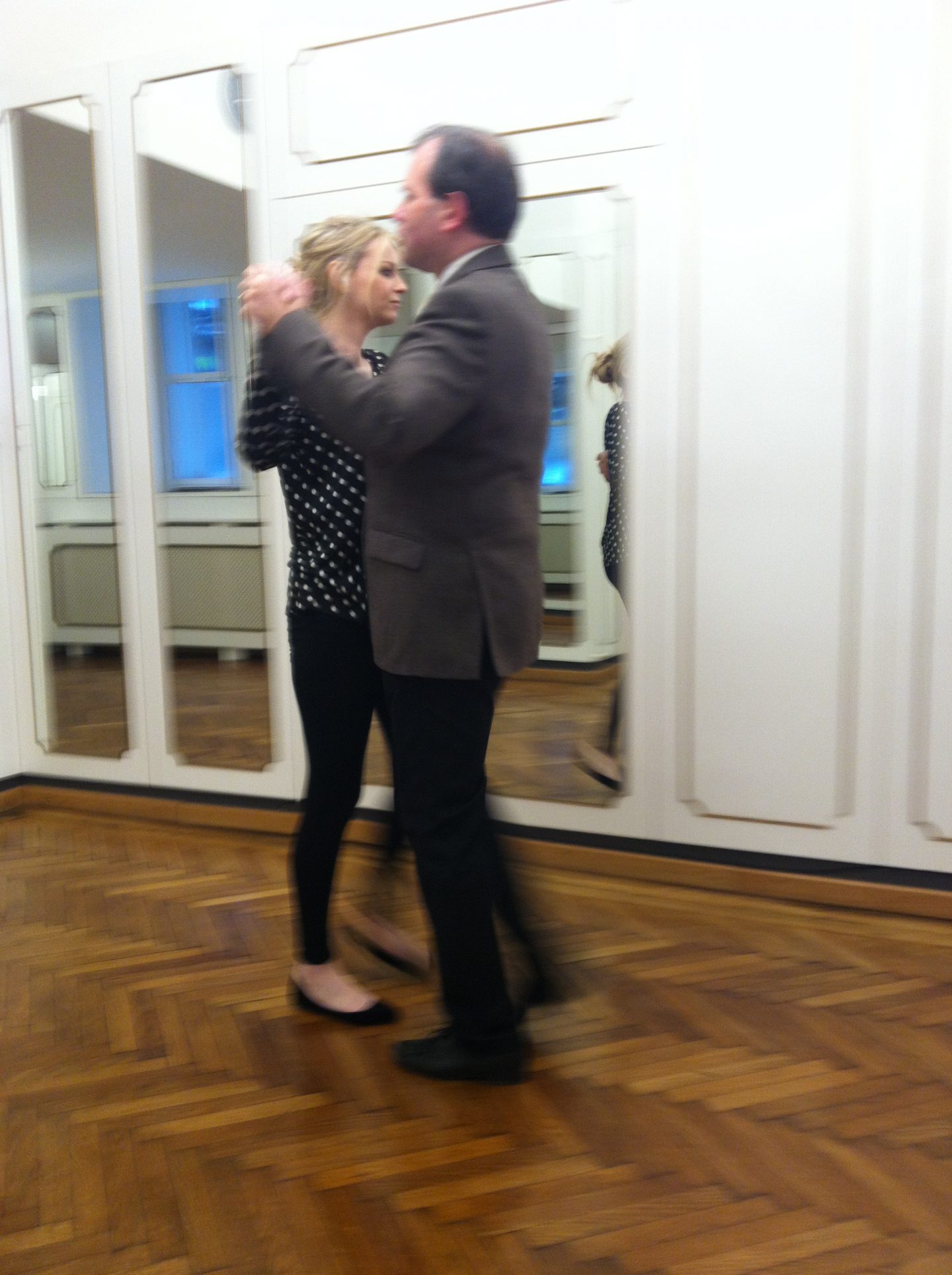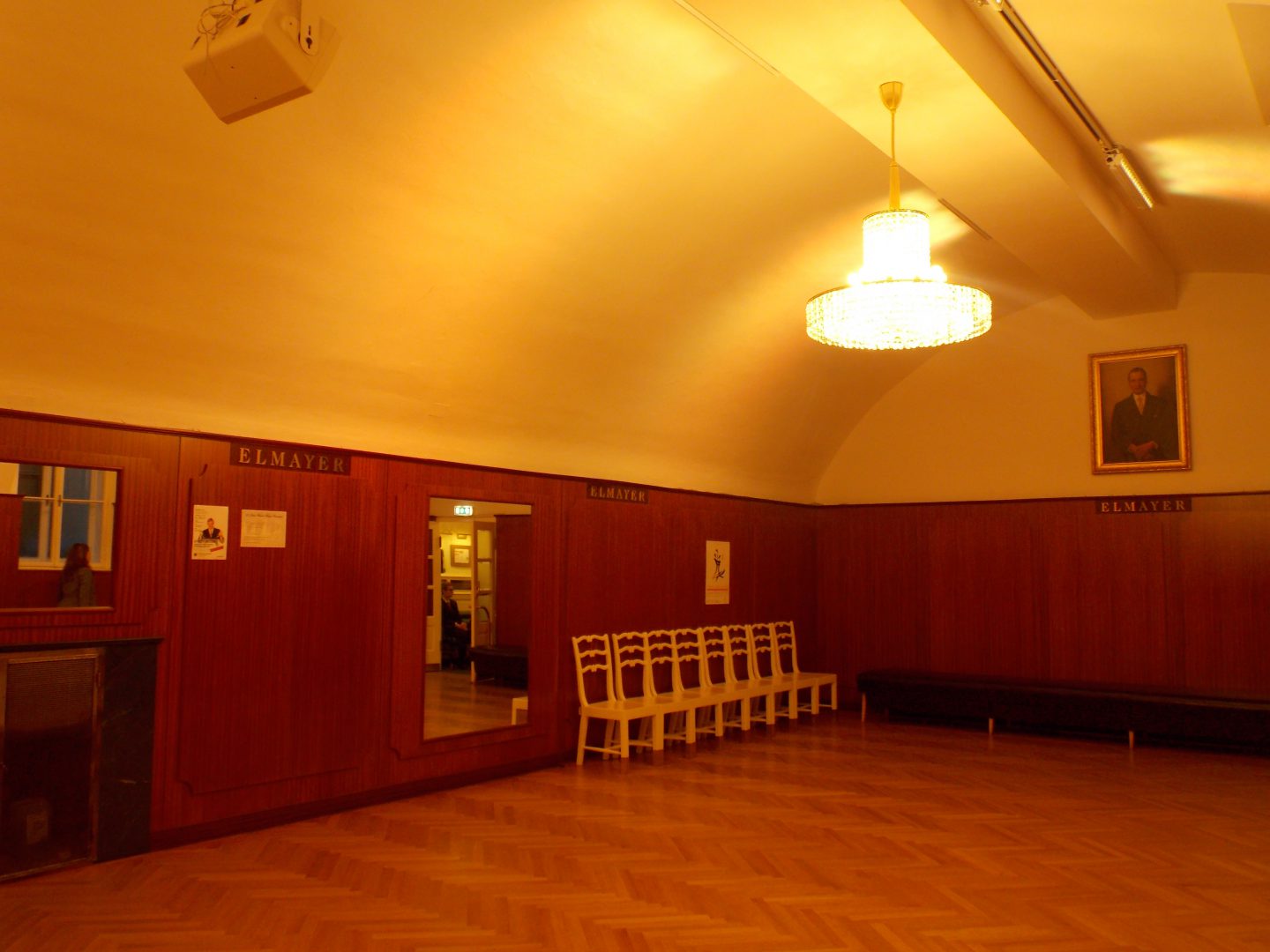It’s New Year’s Eve and all over Vienna, couples are polishing their dancing shoes in anticipation of the city’s glittering Le Grand Bal which takes place this evening in the magical surroundings of the Hofburg Palace.
Tonight, the debutantes committee from Vienna’s world-famous Elmayer Dance School will open the ball. After hours of practice and preparation, they’ll glide elegantly around the palace’s Festsaal, making light work of the intricate dance steps. 
Learning to Waltz

1-2-3. Step -side-close. 1-2-3. Step-side-close. 1-2-3. Step-side-close. 1-2-3. Step-side-close. Step-side-close. 1-2-3. The words swirl round and round as I take to the floor for a waltz lesson with Dominik Truschner, senior director at the prestigious dance school. During the one hour lesson, I learn the basic steps of the Viennese waltz as well as a short history of the school and the cultural background of the dance.
The Elmayer Dance School

Willy Elmayer von Vestenbrugg, a former officer of the Austrian army founded the dancing school in 1919. The building originally housed the stables of the Paliavicini Palace next to the Spanish Riding school, but wandering around the dance studios today, you’d never guess.

Where did the Viennese Waltz come from?
It’s a bit of a mystery, but the Viennese Waltz is thought to have its origins in a German medieval dance of the fourteenth century called the Teutsche, as well as an English country dance called the landler which was danced in 3/4 time.
In Vienna, the waltz grew in popularity throughout the 19th century when aristocrats discovered that people in the countryside and suburbs had renounced more formal routines in favour of a new, much more playful dance in three-four time. Craving a piece of the action, some noblemen even began sneaking away to the balls of their servants to join the fun.
These days, the Viennese Waltz is considered one of the most charming of all ballroom dances. Anyone who has seen Strictly Come Dancing or Dancing with the Stars will agree there is a special ‘fairytale’ quality about the dance when it is performed.
Step by Step
The Viennese Waltz is a ‘rotary dance’ – dancers are continuously turning either towards their right or their left, changing steps to switch the direction of rotation. When the Viennese Waltz is properly danced, couples do not pass, but are constantly turning left and right while travelling anticlockwise around the floor following each other. As you can see in the video, I did manage to pick up a few steps, before it all goes horribly wrong at 0:19..! Dominik Truschner was a great teacher however – I’d definitely recommend a dance lesson at the Elmayer Dance School to anyone visiting Vienna, especially if you plan on going to one of the city’s many balls…
The Ball Season
The Austrian tradition of holding balls and other dance events would be unimaginable without the Viennese waltz. Vienna alone holds around 500 balls a year, which traditionally take place during ‘carnival’ season, from early November until ‘Shrove’ Tuesday.
Ball Etiquette
Men and women are expected to wear formal evening wear to the ball.
- For women, this means a full length gown. Colour-wise, there are no restrictions, but it is worth keeping in mind that white dresses are usually worn by the debutantes of the opening committee and young women. Stoles and bolero jackets are recommended for women who opt for a sleeveless dress. Opera gloves are not compulsory, but when worn, should match the dress.
- Men attending the ball must wear tails, a tuxedo or uniform. “Tails” refers to a morning jacket with rounded tails at the back, trousers are accessorised with braces. a white dress shirt should be worn, as well as a low-cut cotton pique waistcoat, usually in white. The outfit is finished with a white bow tie and black patent shoes. Lace-up shoes are a no-no.
- Men who plump for a tuxedo should have a classic tuxedo jacket with one or two buttons – the jacket must not be slit-back and trousers should have satin piping. A plain or ruched dress shirt, cummerbund and black bow tie complete the look. Footwear should be patent leather shoes or highly polished plain black lace-ups.
- Alternatively, men may wear military dress uniform.
- Both male and female visitors are allowed to appear in national dress.
On the dancefloor
- Both men and women may ask a partner to dance. However, as soon as the couple reach the dancefloor it is always the man that leads.
- The man should accompany the woman back to her table after the dance has finished. Declining an invitation to dance is perfectly acceptable, but it must be done in a ‘charming and endearing’ manner.
- After a gentleman has danced a number of dances with his partner he is expected to ask other ladies present at the table to join him.
At the table
- The woman is always seated to the right of the gentleman. If the woman stands, the man must either get to his feet or make a gesture to this effect.
- Women are always introduced to men, and older people are introduced to younger people.
- If a man decides to greet a woman with a kiss on the hand he should take the woman’s hand, raise it slightly, tilt his head forward and move his lips towards the surface of the back of her hand. His lips must not touch her skin, the kiss must remain ‘a kiss in name only’.
You SHALL go to the ball
- You too can play Strictly Come Dancing for an afternoon in Vienna. The Elmayer Dance School offers group lessons every Saturday from 4 to 5pm at a cost of €45 per couple. Private tuition with your very own dance teacher, is another option. A single lesson costs €58 per person or couple.
- Tickets to Vienna’s Le Grand Bal on New Year’s Eve range from €65 – €450. See the official Le Grand Bal website for further information.
Happy New Year and remember, ‘Keeeeeeeeeeep dancing!’ 🙂




I love dancing and the idea of learning more about a place/culture through its dance definitely intrigues me. Love that you took lessons! I would love to do this one day.
Happy New Year!
If you ever visit Vienna, I’d definitely recommend it Erin!
SO AWESOME! This is something I would love to do. Thanks for posting the rules. I would have no idea what to wear or where to start.
Yes – so much to remember, all part of the fun though…
I need to do this – so so so much fun!
I think you would be great Ana!
so romantic! I want to be a ballroom dancer now!
Thoroughly recommend it Mary Anne!